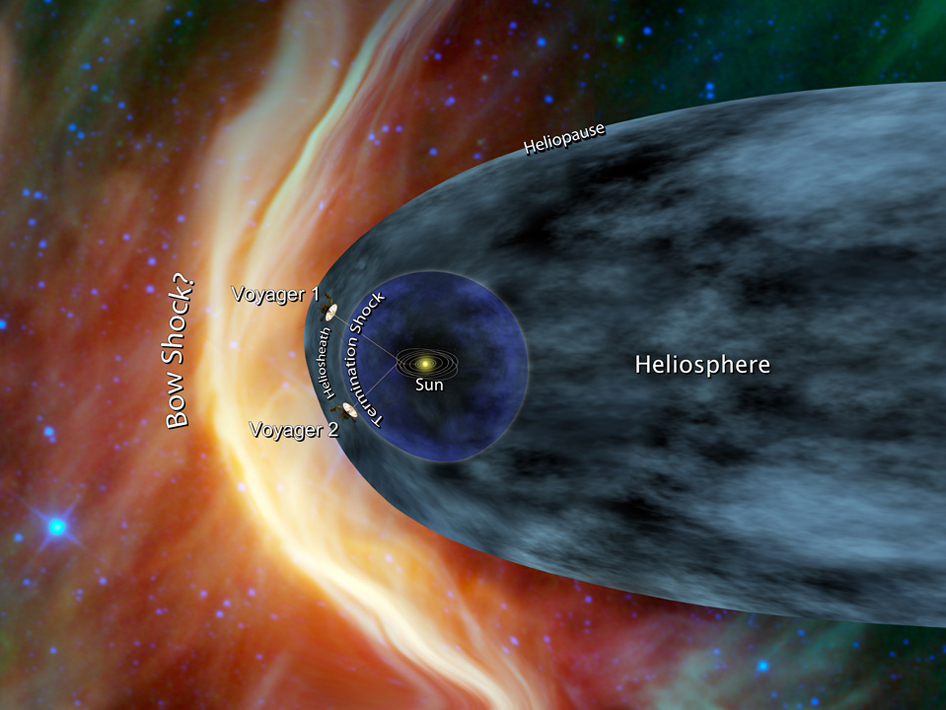35-Year-Old Voyager 2 Probe Is NASA's Longest Mission Ever

The iconic Voyager 2 spacecraft celebrated its 35th birthday Monday (Aug. 20) in a milestone for NASA's longest-running mission ever.
Voyager 2 launched in 1977 just 16 days before its twin, Voyager 1. The probes were tasked chiefly with studying Saturn, Jupiter and the gas giants' moons, but have continued on through the solar system and are now about to cross into interstellar space. Voyager 1 is due to cross first, becoming the first manmade object to travel beyond our solar system, and Voyager 2 is not far behind.
"Even 35 years on, our rugged Voyager spacecraft are poised to make new discoveries as we eagerly await the signs that we've entered interstellar space," Ed Stone, Voyager project scientist at the California Institute of Technology in Pasadena, said in a statement Monday. "Voyager results turned Jupiter and Saturn into full, tumultuous worlds, their moons from faint dots into distinctive places, and gave us our first glimpses of Uranus and Neptune up-close. We can't wait for Voyager to turn our models of the space beyond our sun into the first observations from interstellar space." [Voyager 2 Still Trekkin' at 35 (Video)]
On Aug. 13, Voyager 2 became NASA's longest-operating mission when it broke the previous record of 12,758 days of operation set by the Pioneer 6 probe, which launched on Dec. 16, 1965, and sent its last signal home on Dec. 8, 2000.
Voyager 2 is currently about 9 billion miles (15 billion kilometers) away from the sun and traveling away in a southerly direction, NASA officials said. For the past five years it has been sending back information about the outer layer of the heliosphere, the bubble of charged particles the sun blows around itself. No one really knows how long it will take to get to interstellar space, but NASA officials said the Voyager twins will have enough power to keep communicating with Earth until 2020, possibly 2025.
The Voyager 1 probe, meanwhile, is about 11 billion miles (18 billion km) from the sun and traveling north as it makes its way out of the solar system.
"We continue to listen to Voyager 1 and 2 nearly every day," Suzanne Dodd, Voyager project manager at NASA’s Jet Propulsion Laboratory in Pasadena, Calif., said in NASA's statement. "The two spacecraft are in great shape for having flown through Jupiter’s dangerous radiation environment and having to endure the chill of being so far away from our sun."
Get the Space.com Newsletter
Breaking space news, the latest updates on rocket launches, skywatching events and more!
In case the spacecraft encounter any life beyond our solar system, the Voyager probes each carry a golden record with a collection of sights and sounds from Earth, including 117 images and greetings in 54 languages, with a variety of natural and human-made sounds like storms, volcanoes, rocket launches, airplanes and animals. The collection was chosen by a committee chaired by the late Cornell University astronomer Carl Sagan.
Follow SPACE.com on Twitter @Spacedotcom. We're also on Facebook and Google+.
Join our Space Forums to keep talking space on the latest missions, night sky and more! And if you have a news tip, correction or comment, let us know at: community@space.com.

Megan has been writing for Live Science and Space.com since 2012. Her interests range from archaeology to space exploration, and she has a bachelor's degree in English and art history from New York University. Megan spent two years as a reporter on the national desk at NewsCore. She has watched dinosaur auctions, witnessed rocket launches, licked ancient pottery sherds in Cyprus and flown in zero gravity on a Zero Gravity Corp. to follow students sparking weightless fires for science. Follow her on Twitter for her latest project.









